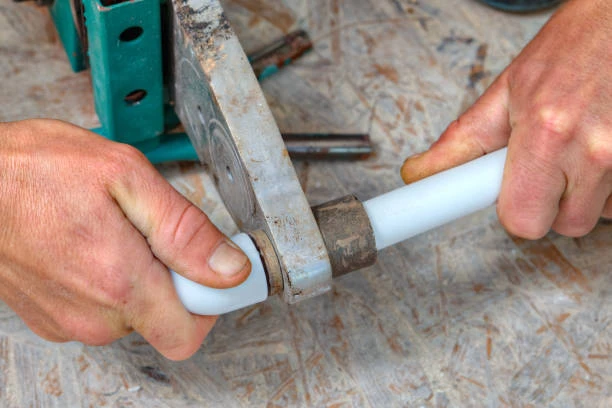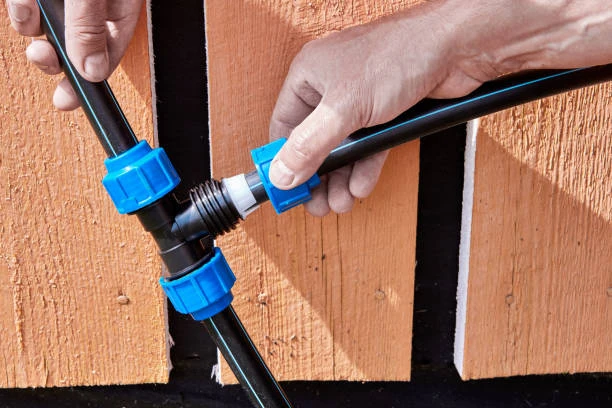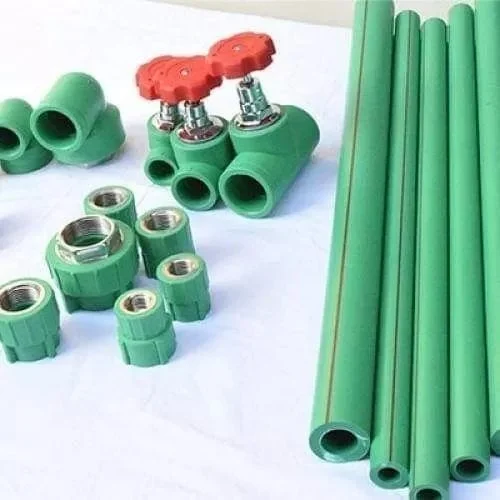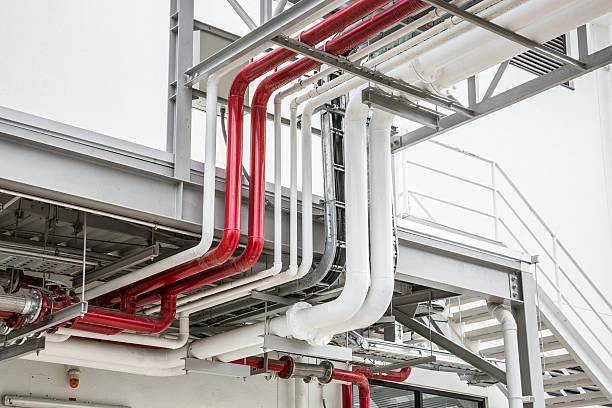(Polypropylene Random Copolymer) PPR pipe fittings have redefined modern plumbing by providing reliable and durable solutions. As construction technology evolves, so does the demand for efficient plumbing systems, with PPR fittings leading the way. But what exactly makes these fittings transformative for plumbing?
Why PPR Pipe Fittings?
PPR pipe fittings are favored for their long-lasting performance, resistance to pressure, and environmental safety. Unlike conventional metal fittings, PPR fittings are non-corrosive and lightweight, offering ease of installation and longevity.
Development Timeline of PPR Pipe Fitting
PPR fittings were introduced as a solution to traditional metal fittings prone to rust and corrosion. The adaptability and resilience of PPR materials have made them an ideal choice for hot and cold water supply systems, and over the years, continuous improvements have made them more efficient and environmentally friendly.
Key Features of PPR Pipe Fitting
Lightweight
PPR pipe fittings are incredibly lightweight, making them easier to transport and install. This feature alone saves time and labor, especially in large-scale installations.
Corrosion Resistance
One of the standout qualities of PPR fittings is their resistance to corrosion, which ensures longevity and reduces the likelihood of leaks or bursts, a common problem in traditional metal pipes.
High Thermal Insulation
PPR fittings also offer exceptional thermal insulation, making them ideal for hot water systems. They maintain a steady temperature, ensuring efficient energy usage.
Applications of PPR Pipe Fitting in Plumbing
PPR pipe fittings are versatile and can be used in various plumbing applications, including domestic water systems, industrial fluid transport, and HVAC systems. Their adaptability to both hot and cold water supply makes them suitable for homes, offices, and factories.
Innovations in PPR Pipe Fitting
Eco-Friendly Manufacturing Processes
Manufacturers are investing in eco-friendly processes to reduce waste and minimize the environmental impact. These sustainable practices are essential in meeting global standards for green construction.
Advanced Sealing Technology
Sealing is a critical aspect of plumbing, and recent innovations focus on improving the sealing capacity of PPR fittings. Enhanced sealing minimizes the risk of leaks, especially under high pressure.
Benefits of PPR Pipe Fittings over Traditional Materials
Compared to Metal Pipes
Metal pipes, although strong, are prone to corrosion. PPR pipes eliminate this issue, providing a rust-free experience, which is crucial for water quality.
Compared to PVC Pipes
PVC pipes are widely used but lack the same level of durability and temperature resistance found in PPR pipes, especially for hot water systems.
Innovative Trends in PPR Pipe Fittings
Enhanced Durability
PPR pipe fittings are constantly being improved to withstand higher pressures and temperatures, making them suitable for more demanding applications.
Temperature Resistance Improvements
With enhanced resistance to temperature fluctuations, PPR pipes are now able to handle both extreme cold and hot conditions without degrading over time.
Technological Advancements in PPR Pipe Fitting
Smart PPR Pipes
Some manufacturers are integrating smart technology into PPR pipes, allowing for real-time monitoring of water flow and pressure.
Automatic Monitoring for Leak Detection
Automated leak detection technology is now being applied to PPR fittings. These systems can alert users to potential issues, helping prevent water damage and saving costs on repairs.
Impact of PPR Innovations on Plumbing Standards
As PPR innovations continue, plumbing standards are adapting. New regulations are being introduced to ensure that plumbing systems using PPR materials adhere to updated performance and safety benchmarks.
Eco-Friendly Aspects of PPR Pipe Fittings
With an emphasis on sustainable construction, PPR fittings offer an eco-friendly alternative due to their long lifecycle and recyclable nature. Their production requires less energy, and their extended lifespan reduces waste in the long run.

Challenges Facing PPR Pipe Fitting Innovations
Material Supply
Sourcing quality PPR materials remains a challenge as demand grows. Maintaining quality across global markets is essential to ensure product reliability.
Cost Considerations
While PPR fittings are cost-effective in the long run, their initial cost may be higher than traditional fittings, which can be a limiting factor for some buyers.
Global Market Trends for PPR Pipe Fittings
The global demand for PPR fittings is on the rise, with Asia-Pacific and Europe leading in usage due to rapid urbanization and industrial growth. Increasing investments in infrastructure projects have boosted demand, solidifying the market’s growth trajectory.
Future Outlook for PPR Pipe Fittings
Looking ahead, the PPR pipe fitting market is expected to see continual growth as technological advancements make these products even more efficient and sustainable. Integration with IoT and smart monitoring systems may soon become standard features in plumbing setups.
Conclusion
In summary, PPR pipe fittings have transformed the plumbing industry with their innovative, durable, and eco-friendly characteristics. As the industry advances, PPR technology is likely to become even more essential in creating efficient, sustainable plumbing solutions.
FAQs
- What makes PPR pipe fitting better than traditional fittings?
- PPR fittings offer superior corrosion resistance, thermal insulation, and durability, making them ideal for both hot and cold water applications.
- Can PPR pipes be used in high-temperature settings?
- Yes, PPR pipes are designed to withstand high temperatures, making them suitable for various industrial and residential applications.
- Are PPR fittings eco-friendly?
- Yes, PPR fittings are recyclable, have a long lifecycle, and require less energy to produce compared to other materials.
- Do PPR pipes require special tools for installation?
- While PPR pipes are easy to install, specialized tools may be required to ensure a proper seal, especially in large-scale installations.
- How long do PPR pipe fittings last?
- With proper installation, PPR pipe fittings can last over 50 years, offering a reliable and long-term plumbing solution.


















